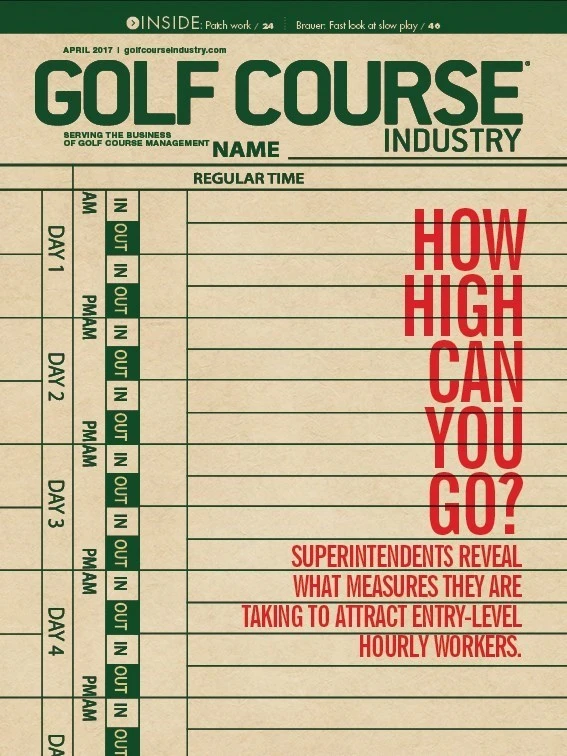Attracting part- and full-time hourly labor is not a problem unique to the golf industry. Ask anyone from your local McDonald’s manager to the owner of any one of the landscape companies operating in your community, and you’ll find that you’re all in the same boat.
Labor is the topic of this month’s cover story, which is the first in a three-part series GCI will be featuring throughout 2017. This issue’s story examines the bleak outlook many superintendents have about the qualified labor market entering this spring, and offers remedies some turf managers are trying to rectify this problem.
Unfortunately, when meeting labor needs, the majority of you are sitting in the same boat and it’s missing its oars.
Let me explain. You hear political rhetoric that advocates “get Americans back to work” and “create job opportunities.” Yet, not only do you have three positions to fill on your maintenance team, but you saw a half-dozen “Now Hiring” signs in business windows on the way to the course this morning. How can this be?
The hard truth is many Americans don’t want to commit to jobs paying minimum wage or just above. So, unless you have the budgetary means to substantially overpay the market average for part-and full-time manual labor, then your problems are going nowhere. Never mind that heading into this season you’re competing against a multitude of similar labor-intensive industries all fishing in the same labor pool.
And it isn’t a case of American workers being lazy. Instead, many seek realistic wages to support families, they desire decent medical benefits and need the ability to balance today’s work/life commitments (i.e. family).
So how do you overcome this? Unfortunately, this problem has no easy answers. However, there may be a few hiring issues you’ve overlooked in your quest to fill these positions with qualified personnel.
When recruiting against a high-salary barrier, don’t overlook or undersell the other performance-based rewards you can provide workers. Many of which won’t dent your budget, either.
It’s believed people don’t leave a job over money, but rather management or working conditions serves as a deterrent or forces them away. Stress the camaraderie among those on the labor crew. Cite the extracurricular aspect of the job and give examples about how you show your appreciation and reward hard work – barbecues, flexible hours, continuing education opportunities, cash bonuses, time off, etc.
Reinforce their desire for job security by having them meet and spend time with long-term crew members who can talk about their experiences and why they’ve stayed so long. Explain to them the opportunities for advancement available on your team, or even in other departments. Let them know how you plan to invest in their continued success.
Finally, stress that the job they perform makes a difference. Not only will they be involved in daily turf maintenance, but explain how they are going to take an active role in upcoming capital projects that will improve the course. For example, target their sense of professional and personal pride by explaining how an upcoming bunker project they’ll be a part of will result in greater enjoyment of the game for members or guests.
These tweaks to your approach to recruitment and hiring may not appeal to every candidate and you may lose out to a few more bucks in the paycheck, but maybe that’s not a bad thing. Landing a worker who sees and values the bigger picture and appreciates the impact they can have on the course is more valuable to you than one who’s just in it for the paycheck.

Explore the April 2017 Issue
Check out more from this issue and find your next story to read.
Latest from Golf Course Industry
- Editor’s notebook: Green Start Academy 2024
- USGA focuses on inclusion, sustainability in 2024
- Greens with Envy 65: Carolina on our mind
- Five Iron Golf expands into Minnesota
- Global sports group 54 invests in Turfgrass
- Hawaii's Mauna Kea Golf Course announces reopening
- Georgia GCSA honors superintendent of the year
- Reel Turf Techs: Alex Tessman





